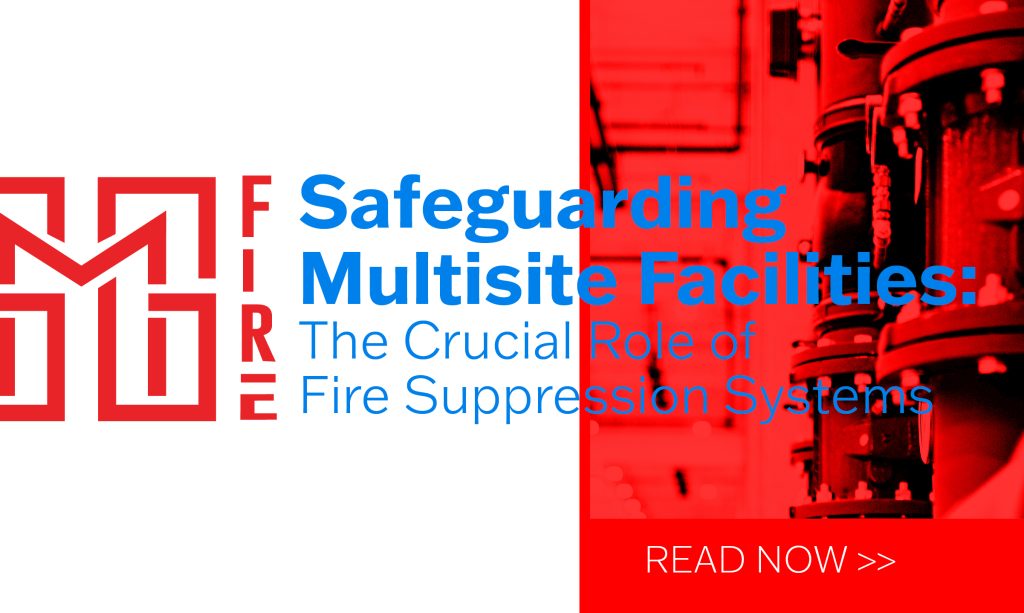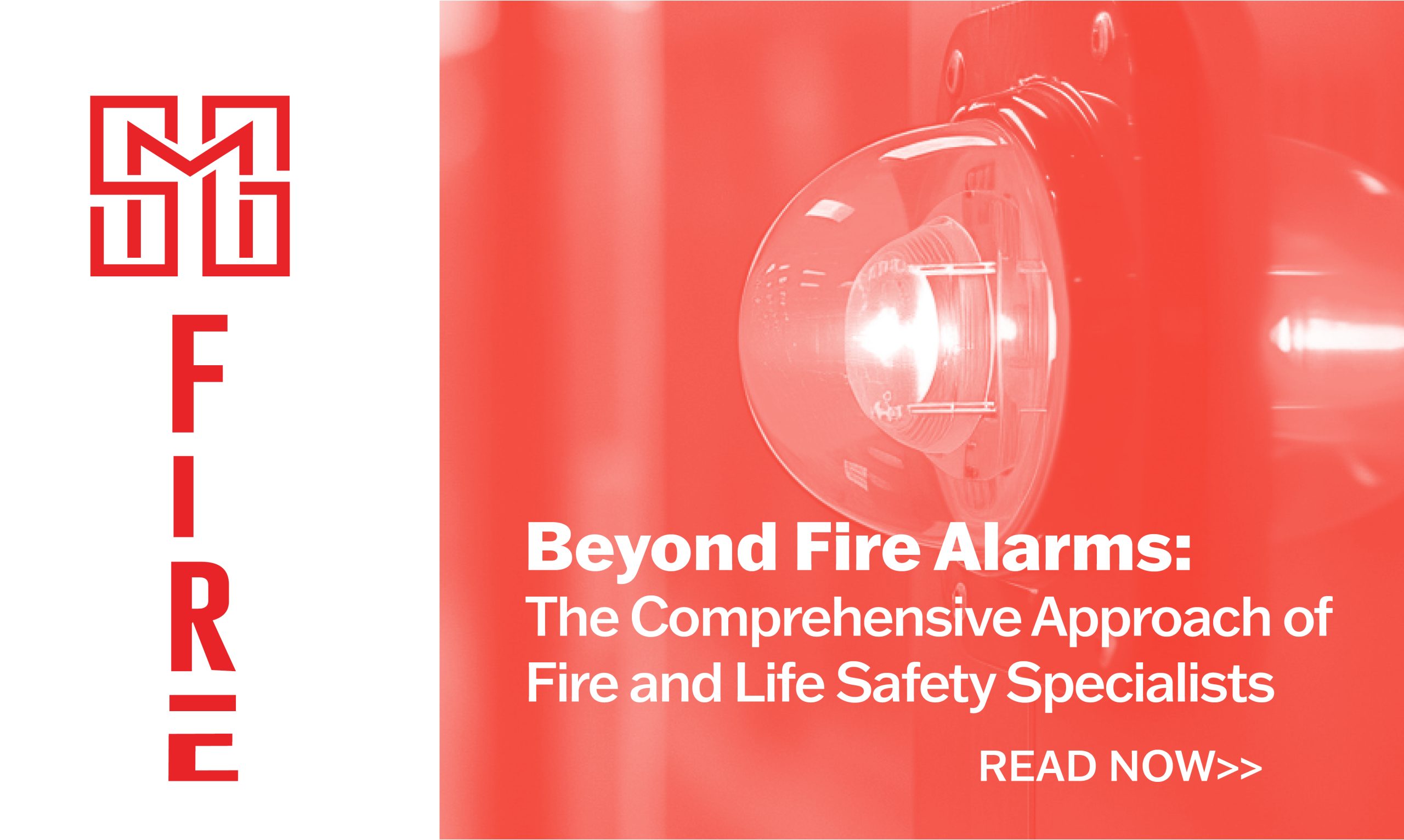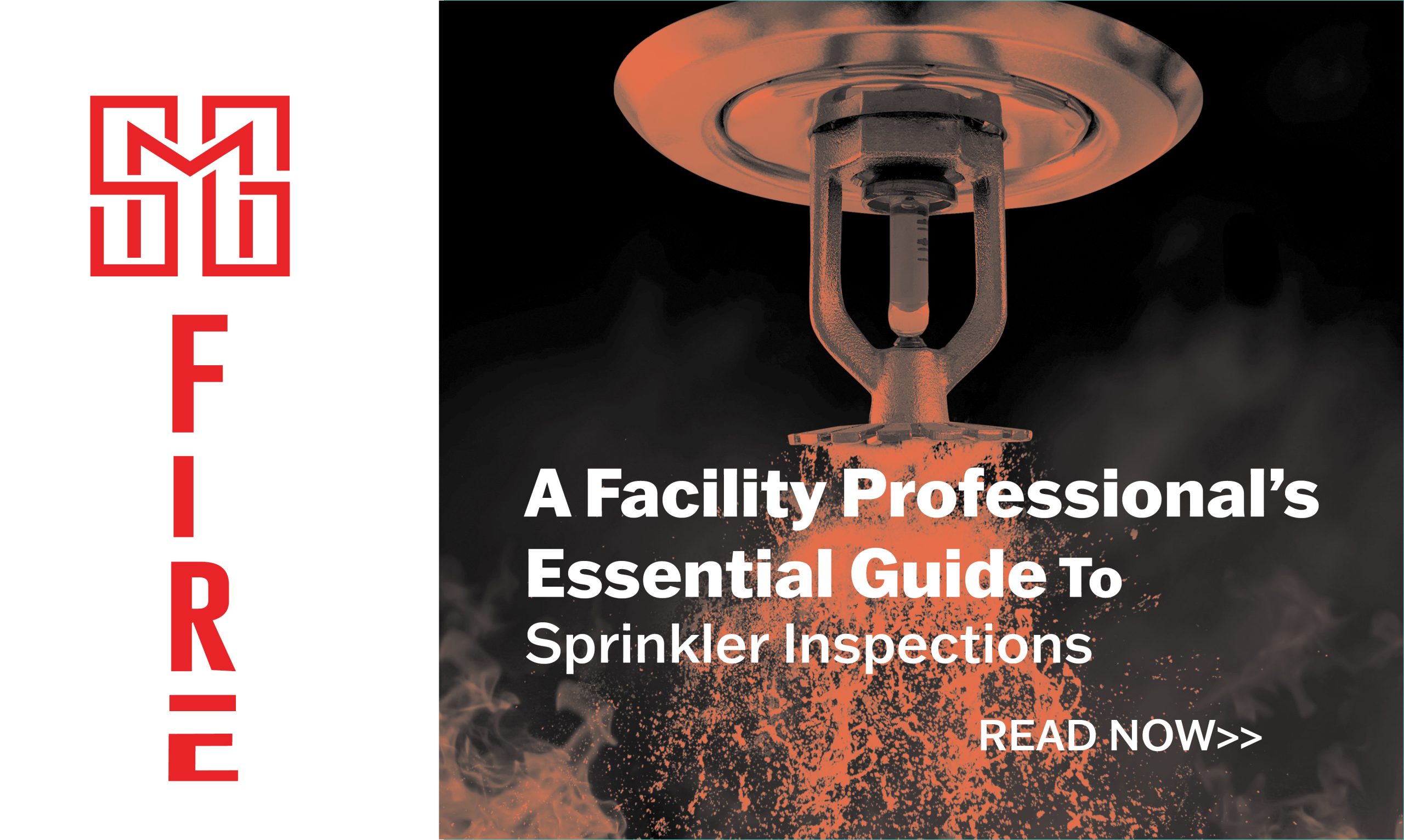Safeguarding Multisite Facilities: The Crucial Role of Fire Suppression Systems
In the dynamic and interconnected world of multisite facilities, the safety and well-being of guests and team members is paramount. One critical aspect of ensuring a secure environment is the implementation and understanding of fire suppression systems. Multisite facility professionals must be well-versed in the various types of fire suppression systems, including sprinkler systems, fire alarms, and fire extinguishing agents. In this blog post, we explore the importance of comprehending these systems, how they operate, the significance of regular maintenance, and why partnering with a reputable provider like SMG Fire is crucial for supporting and maintaining fire and life safety initiatives.
Understanding Fire Suppression Systems
Fire suppression systems encompass a range of technologies designed to detect, control, and extinguish fires swiftly and effectively. For multisite facility professionals, having a comprehensive understanding of these systems is vital for creating a safe and secure environment. Here are some key components to consider:
- Sprinkler Systems
- Sprinkler systems are a first line of defense against fires. They automatically release water when a predetermined temperature is reached, suppressing the fire, and preventing its spread.
- Facility professionals should be familiar with the types of sprinkler systems, their design, and their coverage to ensure optimal protection throughout the facility.
- More on sprinkler system types can be found at NFPA.
- Fire Alarms
- Fire alarm systems are crucial for early detection of fires. They consist of smoke detectors, heat detectors, and alarms that notify occupants and emergency services.
- Understanding the integration of fire alarms with other suppression systems helps professionals coordinate a swift and effective response in case of an emergency.
- Learn more about fire alarm system integration at Fire Safety Search.
- Fire Extinguishing Agents
- Different types of fires require specific extinguishing agents. From water to foam, gas, or chemical agents, facility professionals should be knowledgeable about the appropriate choice for different fire types.
- Proper training on the use and limitations of various extinguishing agents ensures a quick and informed response during emergencies.
Maintenance and Regular Inspections
Having a fire suppression system in place is not enough; regular maintenance and inspections are essential to ensure the continued functionality of these systems. Multisite facility professionals should establish a routine for inspections and testing to identify potential issues before they escalate. Key considerations include:
- Scheduled Inspections
- Regular inspections of sprinkler systems, fire alarms, and extinguishing agents should be conducted to check for leaks, blockages, or malfunctions.
- Inspections help identify issues early on, reducing the risk of system failure during an actual emergency.
- For guidelines on inspection schedules, visit OSHA’s Fire Safety Standards.
- Testing Procedures
- Fire suppression systems should undergo periodic testing to verify their responsiveness. This includes activating sprinklers, testing alarm systems, and ensuring that extinguishing agents are in proper working order.
- Testing provides assurance that the systems will perform as intended when faced with a real fire threat.
- Detailed testing procedures can be found at American Fire Sprinkler Association.
Partnering with SMG Fire
For multisite facility professionals, partnering with an established and proven provider like SMG Fire is a strategic decision. SMG Fire brings expertise, experience, and a commitment to fire and life safety initiatives. Here’s why partnering with SMG Fire is advantageous:
- Expertise and Knowledge
- Since 1996, SMG has been supporting multisite clients. SMG Fire works with an established network of FLS services providers who specialize managing and maintaining fire suppression systems, offering clients access to a wealth of knowledge and expertise in designing, installing, and maintaining these systems.
- For further details on SMG Fire’s expertise, visit our internal link at SMG Fire Services
- Comprehensive Services
- From support with initial system design to ongoing maintenance, SMG Fire provides a full range of services. This comprehensive approach ensures that all aspects of fire and life safety are addressed effectively.
- Proactive Solutions
- SMG Fire emphasizes proactive solutions, helping facility professionals stay ahead of potential issues through regular inspections, testing, and preventative maintenance.
- Compliance and Regulation
- Staying compliant with local regulations and codes is crucial for any facility. SMG Fire network of FLS service providers are well-versed in these regulations, ensuring that all fire suppression systems meet or exceed the necessary standards.
In the complex landscape of multisite facilities, understanding and prioritizing fire suppression systems is a non-negotiable aspect of maintaining a safe environment. Facility professionals must be familiar with the operation, maintenance, and testing of these systems to ensure their reliability during emergencies. Partnering with a trusted provider like SMG Fire not only offers expertise but also ensures that fire and life safety initiatives are upheld to the highest standards. Together, facility professionals and experienced fire suppression partners can create a secure environment that prioritizes the well-being of occupants across multiple sites. To find out more about how SMG Fire can be of assistance – check out our website at www.SMGFire.com
.






